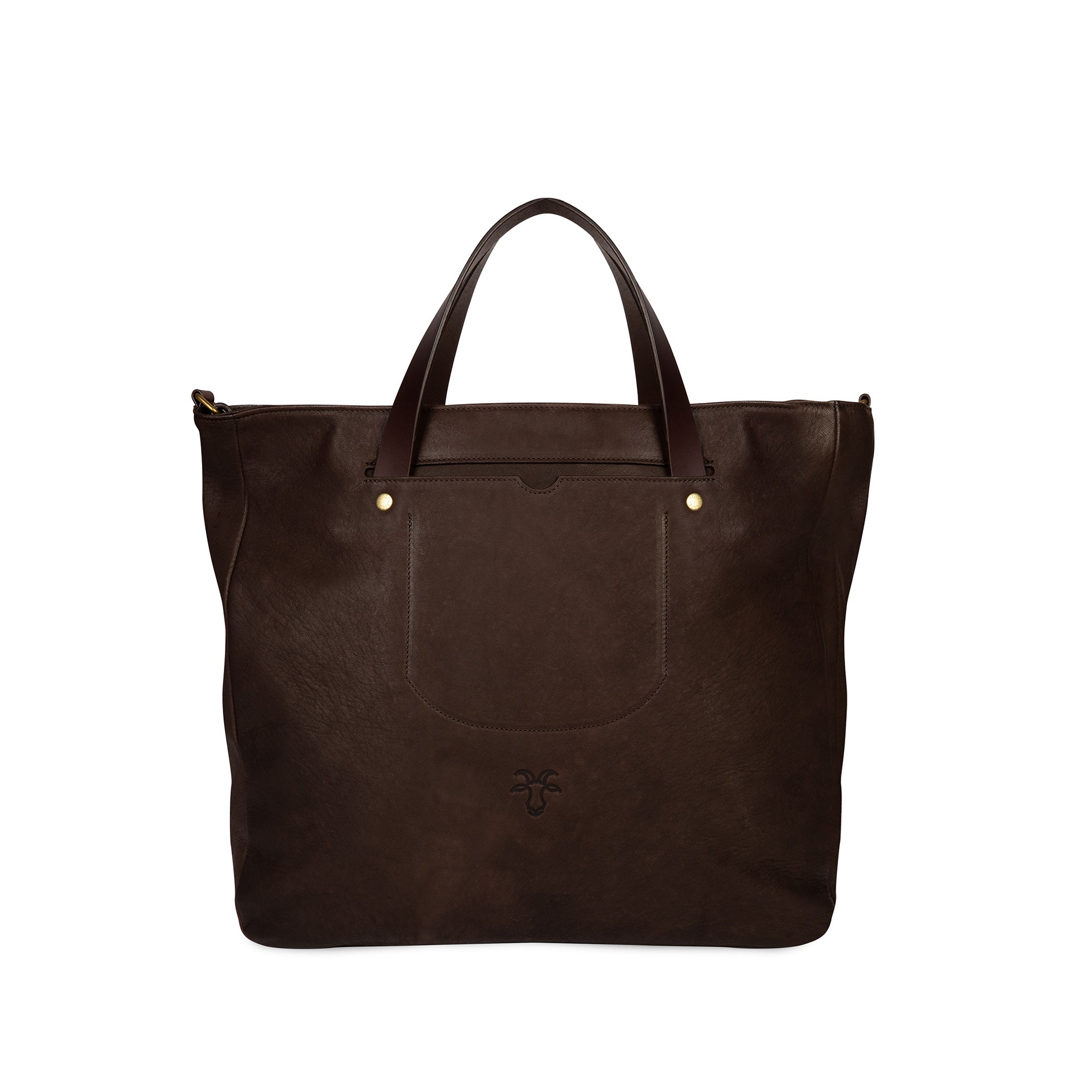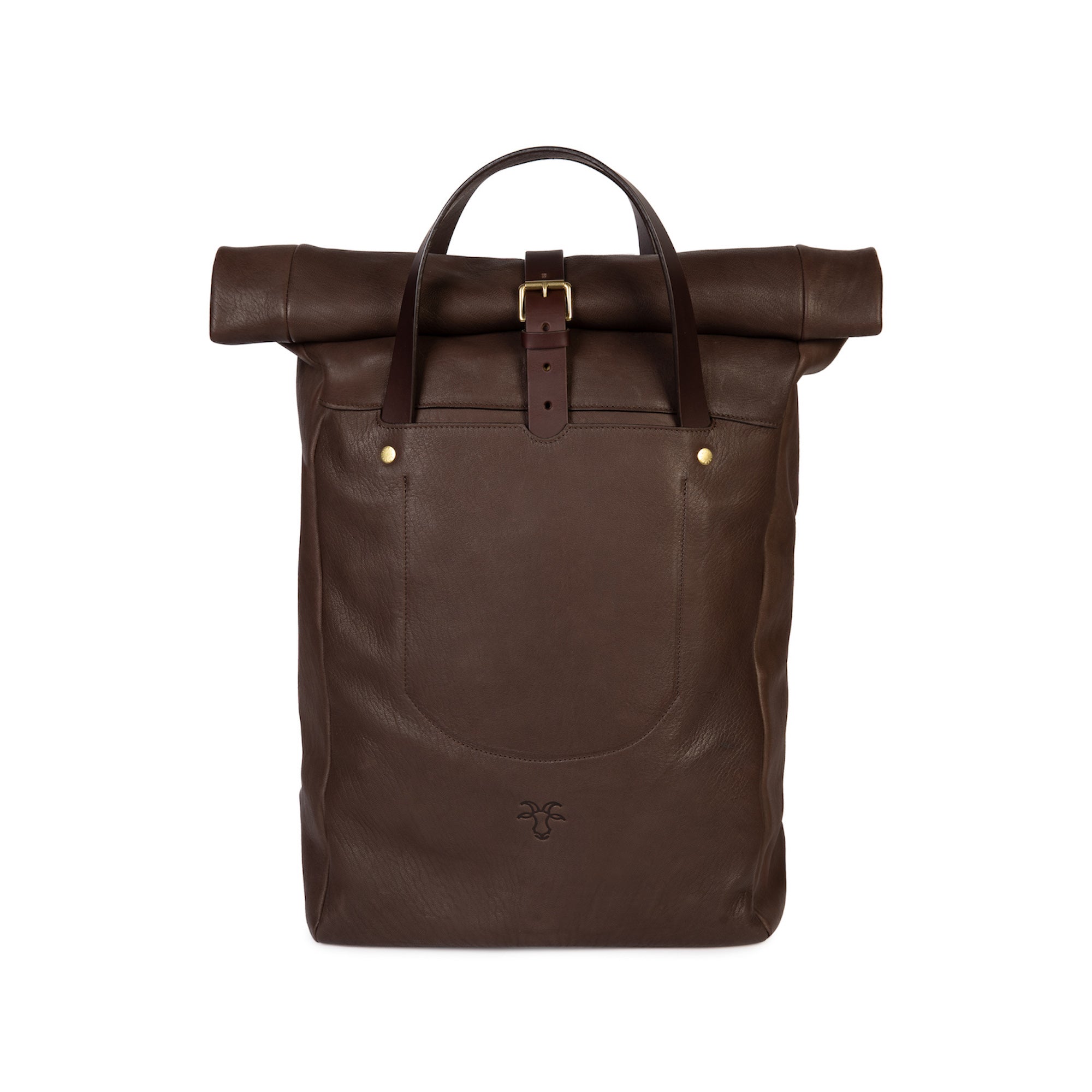Many people are aware that not all leather is equal. Given that we use goat hides, we get asked about cow vs goat leather for instance, and how they measure up. Others also question the difference between bonded leather and real leather. What do these terms mean? And how can you tell one from the other?
In this article, there’s a showdown of bonded vs real leather. We discuss characteristics such as their quality, strength, sustainability and even their smell in a bid to answer which is better.
Bonded vs real leather
Is real leather better quality than bonded leather?
There are five different grades or types of leather. From best quality to worst, real leather encompasses full-grain leather, top-grain leather, genuine leather, and split-grain leather. Bonded leather is the fifth grade of leather, falling below split grain. Therefore, real leather is of better quality than bonded leather.
Real leather is derived from animal hides and possesses natural textures, durability, and ageing characteristics. It develops a unique patina over time, enhancing its aesthetic appeal. Bonded leather, on the other hand, is made from scraps of leather combined with polyurethane. It lacks the same durability and natural qualities as real leather. Overall, while bonded leather might appear like real leather initially, its overall quality and longevity are inferior.
Is bonded leather stronger than leather?
Real leather is typically stronger than bonded leather. Real leather's strength and durability arise from its natural composition and fibre structure. It can withstand stretching, tearing, and wear over time. In contrast, bonded leather is thin and doesn't last as long as genuine leather. This is because it relies on a mix of leather scraps and synthetic materials, resulting in a weaker and less resilient product. The polyurethane content in bonded leather can also deteriorate over time, leading to peeling, cracking, and decreased strength. Therefore, when it comes to durability, real leather generally outperforms bonded leather.
Which is more sustainable: bonded leather or real leather?
In terms of sustainability, real leather can be considered more environmentally complex. While it is a natural material and biodegradable, leather production often involves intensive processes which involve land use, significant water consumption, and tanning chemicals, all of which have an environmental impact.
In comparison, bonded leather incorporates recycled leather scraps and uses fewer resources in its production. However, the use of synthetic polyurethane raises concerns about the long-term environmental impact. Bonded leather, eco-leather and real leather are often pitted against one another, with eco-leather, which is made from plant material, being perceived as more environmentally friendly. But like bonded leather, it is made with polyurethane meaning it has many of the same implications. Ultimately, none of these options are perfect.
That’s why Billy Tannery chose an alternative. We use hides sourced from the meat industry and deer culling, saving them from landfill. Our vegetable-tanned leather is produced without harmful chemicals, opting for bark extracts instead. And, as our leather is real leather and plastic free, the products we make with it will last far longer than any bonded leather counterparts.
How can you tell real leather from bonded leather?
At first glance, real leather and bonded leather may not seem all that different but examine a little closer and it’s relatively easy to tell them apart. There are several key characteristics to assess when it comes to bonded vs real leather:
Appearance: Real Leather shows natural imperfections like scars and pores whereas bonded leather exhibits a more uniform surface without distinct marks.
Smell: There is a distinctive, earthy aroma that is synonymous with real leather. Bonded leather doesn't emit this smell and if anything, may exude a chemical odour.
Texture: Real leather has a varied and slightly uneven texture, known as the grain. It gives the material character and visual appeal. Bonded leather, however, is usually smooth due to its synthetic coating. It can be stamped with a grain pattern, but its other characteristics will give it away.
Durability: Real leather is known for its robustness and longevity which is why it is a popular material for upholstery, bags, shoes, and jackets. Over time, real leather will develop a patina which is expected and often desired. Bonded leather is not as durable and can peel and crack due to its polyurethane content.
Price: Due to its synthetic composition and use of scrap leather, bonded leather is usually more affordable compared to real leather which demands a higher price thanks to its quality and durability.
In summary, bonded leather does have some uses. It's a cost-effective solution for covering furniture and producing inexpensive items. However, its quality, character and longevity just don't compare to real leather. Billy Tannery makes all our products from high-quality, sustainably sourced goat and deer leather and suede which we process ourselves at our microtannery in the Midlands. You can find out more about the materials we use in our deerskin leather guide, guide to suede leather and goat leather guide.






































